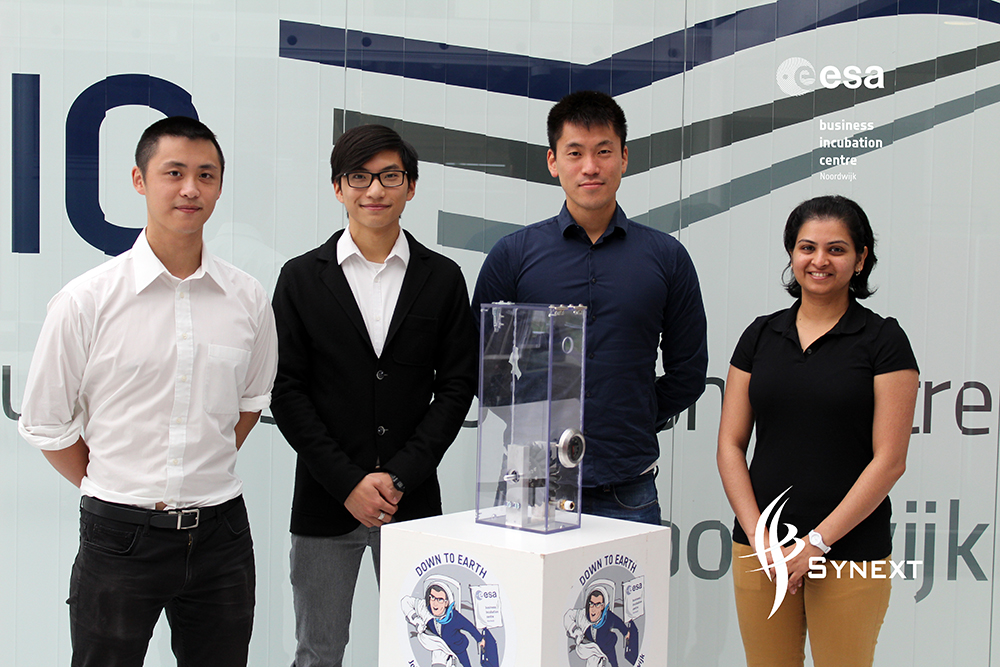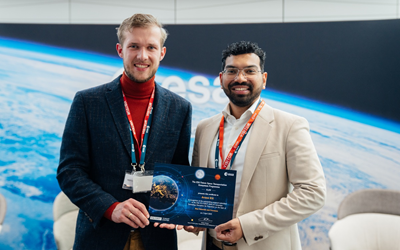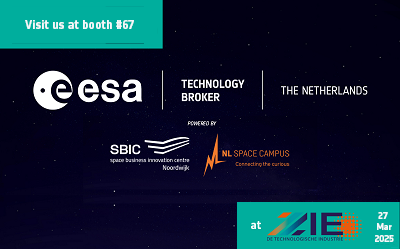Anyone living near an industrial area will be familiar with the sight: the white tufts of steam coming from the chimneys of factories. “Waste,” figure the factory operators. “Energy!” say Tjewei Hu and Sana Fateh, co-founders of ESA BIC incubatee Synext. Synext develops a thermodynamic engine that converts this surplus steam into valuable electricity and hot water.
Synext focuses on re-using steam between 100 and 200 degrees Celsius, a range that was long seen as uninteresting to large industries. Current energy recapturing technologies like Organic Rankine Cycle or Vapor Recompression are complex and expensive, making them unsuited for capturing low-energy waste steam. “Our technology works on much lower temperatures, requires no power input except for the steam, so its self-sustaining, and needs no permanent manning or monitoring,” Synext-COO Sana Fateh sums up the advantages.

The Synext team with their prototype
With their technology, the Synext founders hope to capture part of the 2 billion euros of energy that almost literally goes up in smoke in The Netherlands each year. Across Europe, the industrial sector loses up to 50 billion euros worth of energy through its chimneys.
The idea for Synext was born in 2015 in collaboration with machine manufacturer Geurtsen. The start-up was accepted by Climate-KIC and later by Yes!Delft, before an ESA BIC alumnus advised the Synext team to go visit the Industry Space Days. Via ESA Broker Verhaert they found exactly the technology they were looking for: an energy recovery system originally used for satellite thrusters, developed by an Austrian company. “They described very clearly the advantages and shortcomings,” recalls CEO Tjewei Hu. “Luckily, most of the points of improvement had to do with the small size of the original system, so it was easy for us to scale it up and improve it for our use in industrial systems.”
The idea comes at the perfect time, as climate change is becoming an ever more important issue for policy makers and marketeers. “This range of low-grade waste steam would not have been seen as interesting ten years ago. Steam was seen as just water vapor,” explains Fateh. “But we now know that steam is also a greenhouse gas. Because of the Paris Climate Agreement, companies have to change.”
CEO Hu has grand plans for his company, tackling not only the 50 billion European market, but also moving to large manufacturing markets such as China and India. “Many factories in China are located in or very close to cities. Because of stricter pollution regulations they will have to make a choice: move their entire plant, or install a system like ours.”


